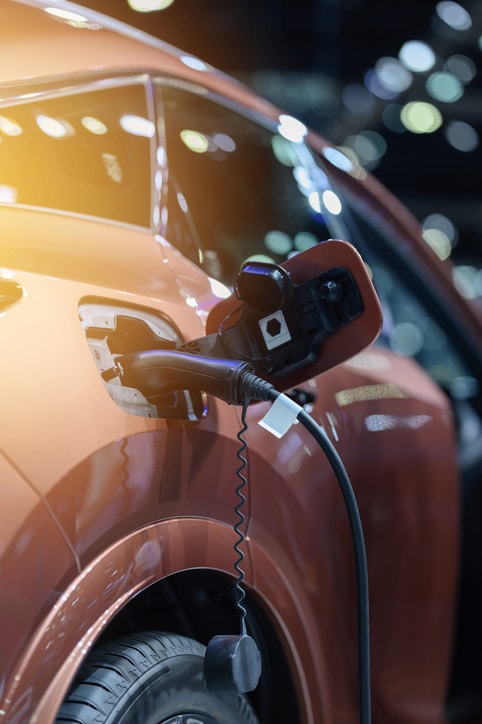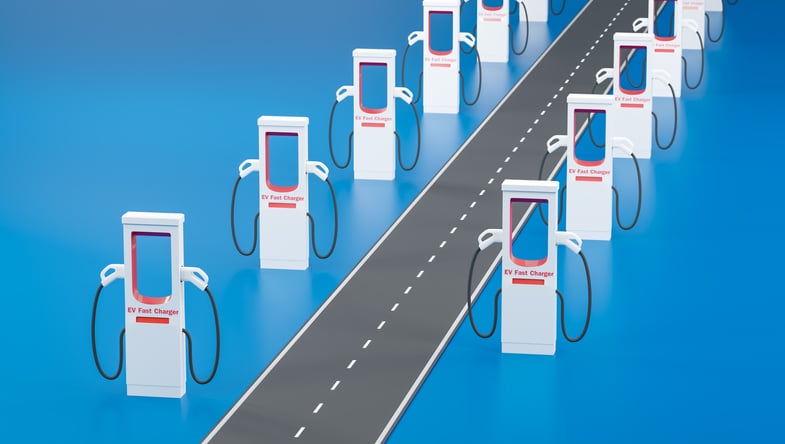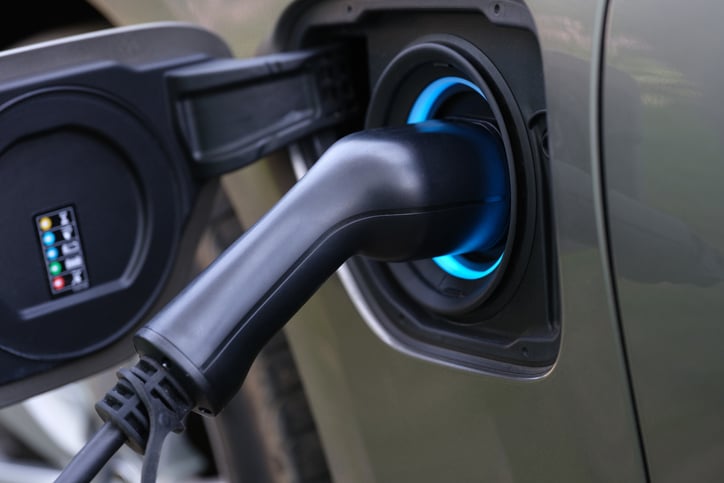What NACS Means for Existing and Future EV Owners
October 18, 2023
The progress within the electric vehicle (EV) industry over the past decade is nothing short of phenomenal. As the rise of EVs continues to redefine automotive landscapes, one critical aspect that often surfaces among discussions is charging and, more significantly, charging compatibility between various EVs. In steps the North American Charging Standard (NACS), an innovative solution set to tackle these challenges and standardize EV charging across all brands.
NACS, initially known as the Tesla Charging Standard, is becoming increasingly dominant in North America. With its growing prevalence, it’s imperative for both current EV owners and those intending to join the ranks to understand what this standard means for them. This article aims to shed light on NACS, its initiatives, and its potential implications for you as an EV owner or prospective EV user.
In this article, we’ll explore what NACS is and why it matters, the trajectory its future is steering toward, and most importantly, what it means for you as we gradually transition to a world where EVs take center stage. Welcome to your comprehensive guide to understanding NACS—the game-changer set to revolutionize your EV charging experience. Buckle up as we navigate through the transformative realm of NACS
What is NACS
The North American Charging System, better known as NACS, is a groundbreaking innovation, earmarking a significant milestone in the continuous evolution of electric vehicles.
Definition of NACS
NACS, currently in the process of being standardized as SAE J3400, is an electric vehicle charging system. Originally known as the Tesla Charging Standard, the NACS offers a standard connecting interface for electrical charging and communication between EVs and their chargers. The goal of this innovation is to bring uniformity among charging systems across different EV brands, thereby simplifying the charging process for EV owners.
History and Development of NACS
NACS originated from Tesla’s proprietary electric vehicle charging connector and charge port. Given the increasing growth in the electric vehicle market and the prevalence of Tesla’s charging system, the NACS is becoming the most common charging standard in North America. The standardization of NACS also aids in alleviating the issue of charging incompatibility that various makes and models of EVs have previously faced.
Importance and benefits of NACS to the EV industry
NACS harbors immense benefits for the electric vehicle industry and its consumers. By creating a standard charging platform, NACS eliminates the need for different chargers for different EV brands. This compatibility not only democratizes the charging infrastructure but also makes EV ownership considerably more convenient.
The adoption of NACS will further facilitate the expansion of public charging locations, which, in turn, would accelerate EV adoption. In the bigger picture, this is a major leap forward in reducing carbon emissions and moving towards more sustainable transportation solutions worldwide.
Stay with us as we further discuss the benefits and impacts of NACS for current and potential EV owners.
Benefits of NACS for Future EV Owners
Adopting the North American Charging System presents numerous advantages for future EV owners. Coupled with the rise of electric vehicles and their growing acceptance, NACS serves as a cornerstone in enhancing the convenience and functionality of EV use.
Increased Compatibility
One of the fundamental benefits of NACS is its increased compatibility. Having a standard connector means any EV can be used with any NACS-compatible charging station, regardless of the manufacturer. Given that NACS is becoming the common charging standard in North America, the chances of finding a compatible charging station are exceptionally high.
Greater Flexibility
With the introduction of an adapter, NACS provides greater flexibility for charging. For instance, Ford EV owners and other vehicles that adopt NACS will gain access to thousands of Superchargers across North America through a Tesla-developed adapter. This increased level of accessibility offers EV owners increased flexibility when traveling, offering them a wide range of charging options.
Cost Efficiency
The introduction and widespread adoption of NACS have the potential to reduce the cost of EV ownership. By streamlining the charging infrastructure and minimizing the number of obscure, brand-specific charging standards, EV owners may find fewer barriers to EV usage. This effect could result in lower costs for both public and private charging station installations, and therefore, lower charging costs for consumers.
NACS could particularly benefit long-haul travelers by making the planning and logistics around charging on long journeys much easier. With most brands planning to adopt NACS in their vehicles by 2025, future EV owners could benefit significantly from the advantages offered by this charging standard.
However, it’s important to note that the impact and benefits of NACS aren’t exclusive to future EV owners. In the next section, we will discuss how existing EV owners can also benefit from this change.
Impact on Existing EV Owners
While the transition to NACS primarily affects the future landscape of EVs, it is also important to consider the effects this change may have on existing EV owners.
Adapting to NACS
Existing EV owners, especially those whose vehicles possess different charging sockets, may need to use an adapter to access the benefits of NACS. Manufacturers, such as Hyundai and Tesla, are expected to offer adapters to existing EV drivers that currently do not have NACS ports.
Existing EV owners from brands like Ford and General Motors, which plan to integrate NACS into their EV models, can use Tesla-manufactured adapters for the transition phase. By doing so, they can gain access to charging stations across North America during the transition to having the NACS connector built-in.
Potential Challenges and How to Overcome Them
Despite the convenience, this transition might pose challenges. Adapting to a new charging port may bring up concerns about accessibility and compatibility with older EV models. However, with the provision of adapters and comprehensive compatibility across charging stations, these concerns can be effectively mitigated over time. As NACS becomes the new standard, charging infrastructure will naturally adjust, leading to increased convenience for all EV owners.
Benefits for Existing EV Owners in Transitioning to NACS
While the shift to NACS might initially seem daunting for current EV owners, the transition holds substantial long-term advantages. Evolving with the industry and embracing NACS means getting access to an extended network of charging stations, leading to more convenient and less stressful electric travel. This is great news for EV owners planning long-distance trips or those living in areas where charging stations were previously scarce.
Moreover, transitioning to NACS also means being an integral part of the evolution towards a more sustainable future, where EV charging is convenient, standard, and universally compatible.
The impact and potential of NACS doesn’t stop there. In the next section, we look closer at the companies adopting NACS and their adoption timelines.
Brands Adopting NACS and Their Timelines
The shift towards universal charging is well underway with several automotive giants committed to integrating the North American Charging Standard (NACS) into their EV models. This transition emerges as part of a collective movement to standardize, simplify, and enhance the electric vehicle experience for owners across North America.
Brands Currently Supporting NACS
Companies that have manufactured over 75% of the EVs on the road have committed to NACS adoption. This includes Tesla, who originally developed the standard, as well as Ford Motor Company and General Motors.
Kia and Honda have also announced its intention to adopt the NACS connector in line with its competitors.
Upcoming Brands Expected to Adopt NACS
Alongside existing supporters, more auto manufacturing giants are set to join the NACS wave in the near future. Honda, for instance, has set a timeline for incorporating NACS into their vehicles. In a similar vein, Hyundai Motor Group is also aiming to adopt NACS for their future EV models. These steps from industry leaders emphasize a shared vision about the future of EV charging, painting a clear picture of where the industry is heading.
Timeline of Adoption
While each brand has its timeline for NACS adoption, most have a similar trajectory. Brands like Honda and Hyundai Motor Group, which includes Kia and Genesis, are targeting the adoption of NACS for their EV models starting around 2025.
Similarly, Ford and GM plan to start integrating the NACS connector into their EVs and providing adapters for current EVs around spring 2024.
The universal adoption of NACS will play a pivotal role in amplifying the convenience and flexibility of EV ownership. As more manufacturers pledge their commitment to NACS, EV owners can look forward to a seamless and standardized charging experience across North America.
Practical Advice
As the world of electric vehicles continues to evolve, staying updated with key changes, such as the integration of NACS, is essential for both present and future EV owners. Here are some practical tips that can help you embrace and benefit from this transition.
Tips for Adapting to NACS
There are several steps that EV owners can take to adapt to the transition to NACS:
- Research and Understand: The first step to adaptation is understanding. Familiarize yourself with the design and function of the NACS connector. Various online resources can provide comprehensive guides detailing the differences between the available electric vehicle charging connectors.
- Get an Adapter: For existing EV owners with vehicles incompatible with NACS, getting an NACS adapter is a practical option. Brands like Ford and GM have plans to provide adapters for their current EV owners. Some manufacturers are also considering shipping a free adapter to EV owners to facilitate the transition.
- Prepare for New Charging Infrastructure: As more public charging stations move to adopt NACS, it would be useful to identify these stations for convenient charging during travels.
How to Find NACS Compatible Charging Stations
With the widespread adoption of NACS, finding a compatible charging station will become increasingly convenient. Using online tools and apps, you can identify nearby charging stations that use the NACS connector. Numerous websites provide comprehensive maps and lists of charging stations, categorized by connector type, making it easy to locate NACS-compatible stations.
Understanding the Transition Process to NACS
The transition to NACS won’t happen overnight, and it’s important to understand how this process will unfold. Here are a few key points to help grasp the transition:
- Phased Rollout: Many auto manufacturers, including giants like Ford and General Motors, plan to start integrating the NACS connector in their EVs around 2024 or 2025. During this initial rollout period, they will also provide NACS adapters for their existing EVs.
- Infrastructure Development: As more vehicles begin to use the NACS connector, expect to see a rise in the number of compatible charging stations. Organizations like Electrify America plan to add NACS connectors in their existing and future charging stations.
- Market Push: There may be a strong push for independent charging networks to add NACS connectors to accommodate the increasing number of NACS vehicles. This could result in an increase in the overall availability of NACS charging stations.
Being an Early Adopter
Understanding and adapting to these changes early can provide a strategic advantage. Not only can you benefit from increased charging options, but you will also pave the way for more seamless travel plans with your EV. Being an early adopter of this new standard can set a positive example for others and contribute to the increased mainstream acceptance of EVs.
In the next section, let’s explore the opportunity for EV owners to play an essential role in contributing to a more sustainable and efficient future for all.
NACS in the Landscape of Future Electric Vehicles
As numerous brands inch closer towards adopting the North American Charging Standard (NACS), the future landscape of electric vehicles is primed to undergo a transformation empowered by compatibility, accessibility, and convenience.
NACS as the New Norm
With major automakers such as Ford, GM, and more recently, Nissan adopting the NACS, it’s likely that this standard will progressively become the new norm in the EV industry. Future models of these brands and potentially others will come equipped with the NACS port, facilitating a more seamless charging experience for owners.
Boost in EV Infrastructure Development
The adoption of NACS positively impacts the expansion of EV infrastructure. Charging networks like Electrify America plan to incorporate NACS connectors in their existing and upcoming charging stations. This development is expected to strengthen the EV charging network while making it easier for EV owners to find charging ports compatible with their vehicles.
Future-proofing the EV Charging Experience
With NACS integration becoming more widespread, the charging experience for EV owners becomes “future-proof,” adapting to advancements in technology and improvements in the infrastructure. The widespread adoption and ensuing standardization of the NACS connector also streamlines the process for manufacturing and installation of charging stations, further enhancing the growth of charging infrastructure.
Conclusion
The shift towards the North American Charging Standard marks a significant step in the evolution of the electric vehicle industry. By creating a universal charging standard, NACS is set to simplify and enhance the EV charging experience, making it more straightforward and less daunting for both present and prospective EV owners. The transition may present challenges initially but the far-reaching benefits mean more convenience, better compatibility, and a stronger push towards a greener future. As we embrace NACS and the benefits it ushers, we stand at the threshold of a new chapter in the history of electric vehicles – a chapter characterized by unity, standardization, and progressive evolution towards a more sustainable future.
Contact Us


